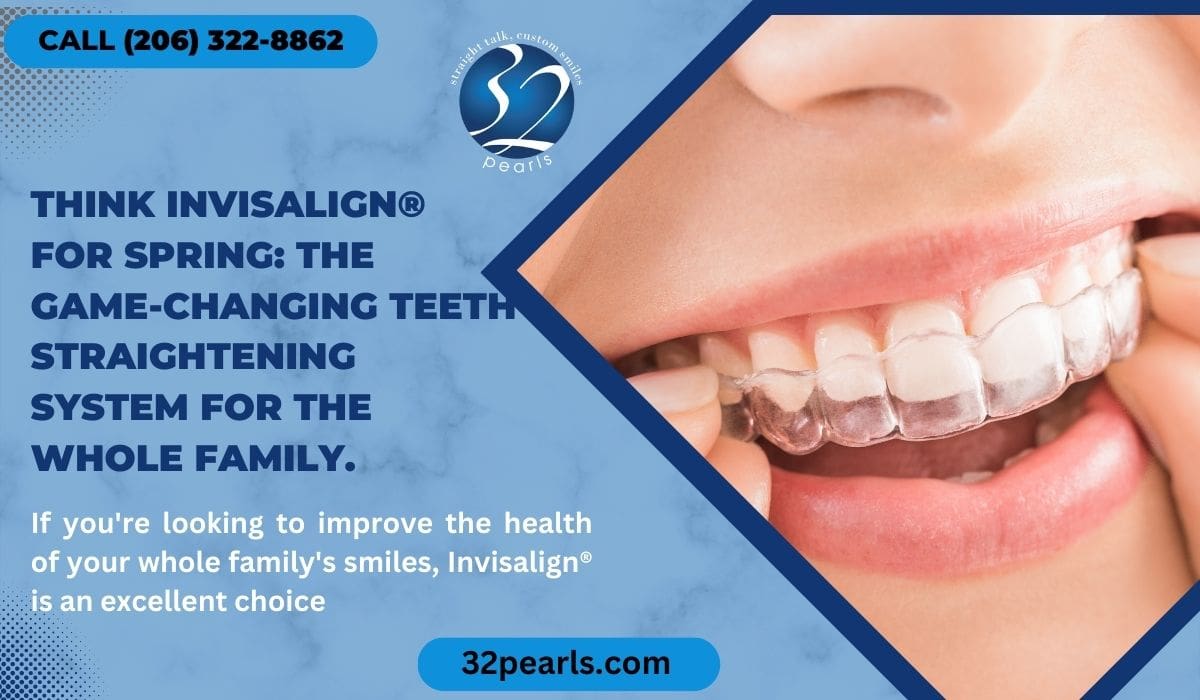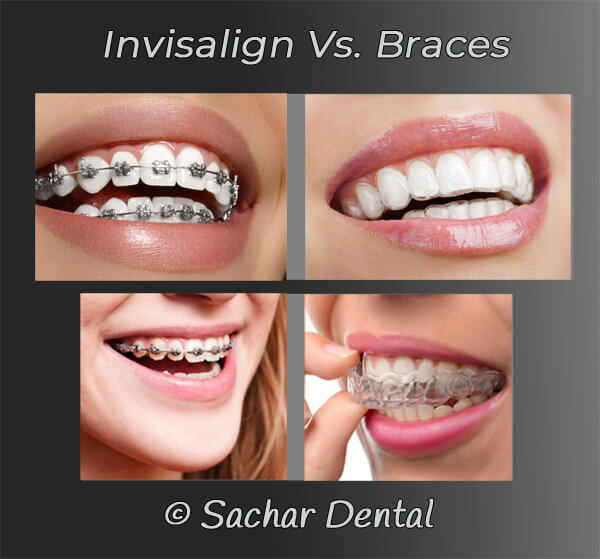Preserving Oral Health While Using Invisalign: Tips for a Smooth Experience
Preserving Oral Health While Using Invisalign: Tips for a Smooth Experience
Blog Article
Invisalign vs. Typical Dental braces: Which Option Is Right for You?
When considering orthodontic treatment, the choice between Invisalign and standard dental braces offers several important variables that warrant careful evaluation. Invisalign provides a discreet choice with detachable aligners, while conventional braces offer a much more visible yet reliable option for severe misalignment.
Overview of Therapy Options

In comparison, standard dental braces are composed of metal braces and cables that are adhered to the teeth. This approach applies continual stress with time to attain positioning. While effective for intricate orthodontic problems, standard braces require regular sees for adjustments and can position obstacles in maintaining dental health as a result of the problem of cleaning about cables and brackets.
Both options have their merits, and the option typically rests on specific dental conditions, way of living preferences, and patient conformity. Eventually, seeking advice from an orthodontic professional is essential for establishing one of the most appropriate treatment plan customized to specific requirements. Comprehending the nuances of each alternative can considerably affect the total success of orthodontic treatment.
Visual Factors To Consider
A significant variable influencing the selection in between Invisalign and standard braces is the aesthetic allure each therapy provides. Invisalign aligners are crafted from clear plastic, making them basically unseen when put on. This discreet look is especially interesting young adults and grownups who may really feel awkward regarding their orthodontic treatment. The capability to maintain a natural smile throughout the positioning process can significantly improve the patient's self-confidence in social and specialist settings.
On the other hand, standard braces are composed of steel braces and wires, which can be extra recognizable. While innovations in orthodontic technology have actually brought about the advancement of smaller braces and tinted elastics, typical dental braces still preserve an even more noticeable profile. For some individuals, the presence of braces might deter them from looking for essential treatment.
Ultimately, the selection in between Invisalign and traditional dental braces may rest on individual preferences regarding visual appeals. Patients who focus on discernment commonly favor Invisalign, while those who are much less concerned regarding exposure may choose conventional braces. Understanding the visual effects of each option is essential for making a notified choice that aligns with one's way of life and choices.
Comfort and Convenience

In regards to convenience, Invisalign aligners are detachable, making it possible for individuals to enjoy their favorite foods without restriction and keep optimal oral health. Cleaning and flossing are streamlined, as the aligners can be taken out throughout these regimens, whereas typical dental braces call for careful maneuvering around wires and braces.
In comparison, standard braces necessitate regular adjustments, making them less hassle-free for those with hectic routines. In general, the comfort and benefit of Invisalign make it an attractive selection for numerous people looking for orthodontic treatment.
Treatment Duration and Effectiveness
While both Invisalign and traditional braces work in correcting dental imbalances, the period of treatment can differ considerably in between both alternatives. Generally, Invisalign therapy can take anywhere from 12 to 18 months, relying on the complexity of the situation. The clear aligners function by gradually moving teeth into their wanted placements, and routine follow-ups with an orthodontist help make sure development continues to be on the right track.
On the other hand, typical braces usually call for a longer commitment, normally varying from 18 months to 3 years. This results from their fixed nature and using brackets and wires, which can be extra efficient for extreme misalignments and intricate instances use this link (Invisalign). The therapy efficiency of standard dental braces is well-documented, as they enable specific adjustments and higher control over tooth motion
Inevitably, the option in between Invisalign and traditional dental braces may depend upon both the expected treatment period and the certain oral problems handy. Consulting with an orthodontist is critical, as they can supply customized suggestions based on private needs, ensuring the picked approach lines up with preferred timeframes and outcomes.
Expense Comparison and Insurance Policy Alternatives
Expense plays a considerable role in the decision-making procedure for people considering orthodontic therapy, whether selecting Invisalign or standard dental braces. Generally, the click for more info expense of Invisalign arrays from $3,000 to $8,000, while conventional dental braces commonly set you back in between $2,000 and $6,000. Elements influencing these prices include the complexity of the situation, the duration of treatment, and geographical place.
Lots of dental insurance coverage strategies supply partial insurance coverage for orthodontic treatments, however the specifics can differ widely. Normally, conventional braces may be much more often covered by insurance coverage strategies compared to Invisalign, which some insurance providers categorize as a cosmetic treatment.
Furthermore, several orthodontic methods offer versatile layaway plan, making both therapy choices more obtainable. Individuals ought to make inquiries regarding possible funding alternatives and discounts for upfront payments. Examining the total cost, consisting of insurance benefits and layaway plan, is vital for making an Read Full Article educated choice that straightens with both visual choices and budget factors to consider.

Final Thought
In summary, the choice between Invisalign and typical braces depends upon multiple variables, including visual choices, comfort, treatment duration, and price. Invisalign uses a very discreet, detachable alternative that promotes oral hygiene and nutritional versatility, while standard dental braces may be much more suitable for complex oral concerns and commonly come with a lower price point. Inevitably, examination with an orthodontist is vital to examine individual scenarios and determine the most proper therapy choice for attaining optimum dental positioning.
When thinking about orthodontic treatment, the option between Invisalign and conventional dental braces provides numerous crucial factors that warrant careful examination.Contrasting Invisalign and conventional braces reveals unique therapy options for orthodontic adjustment.While both Invisalign and typical braces are efficient in fixing oral imbalances, the period of treatment can differ substantially in between the 2 options.Cost plays a substantial duty in the decision-making process for individuals considering orthodontic treatment, whether opting for Invisalign or conventional braces.In recap, the option between Invisalign and traditional dental braces hinges on numerous elements, consisting of visual choices, comfort, therapy duration, and price.
Report this page